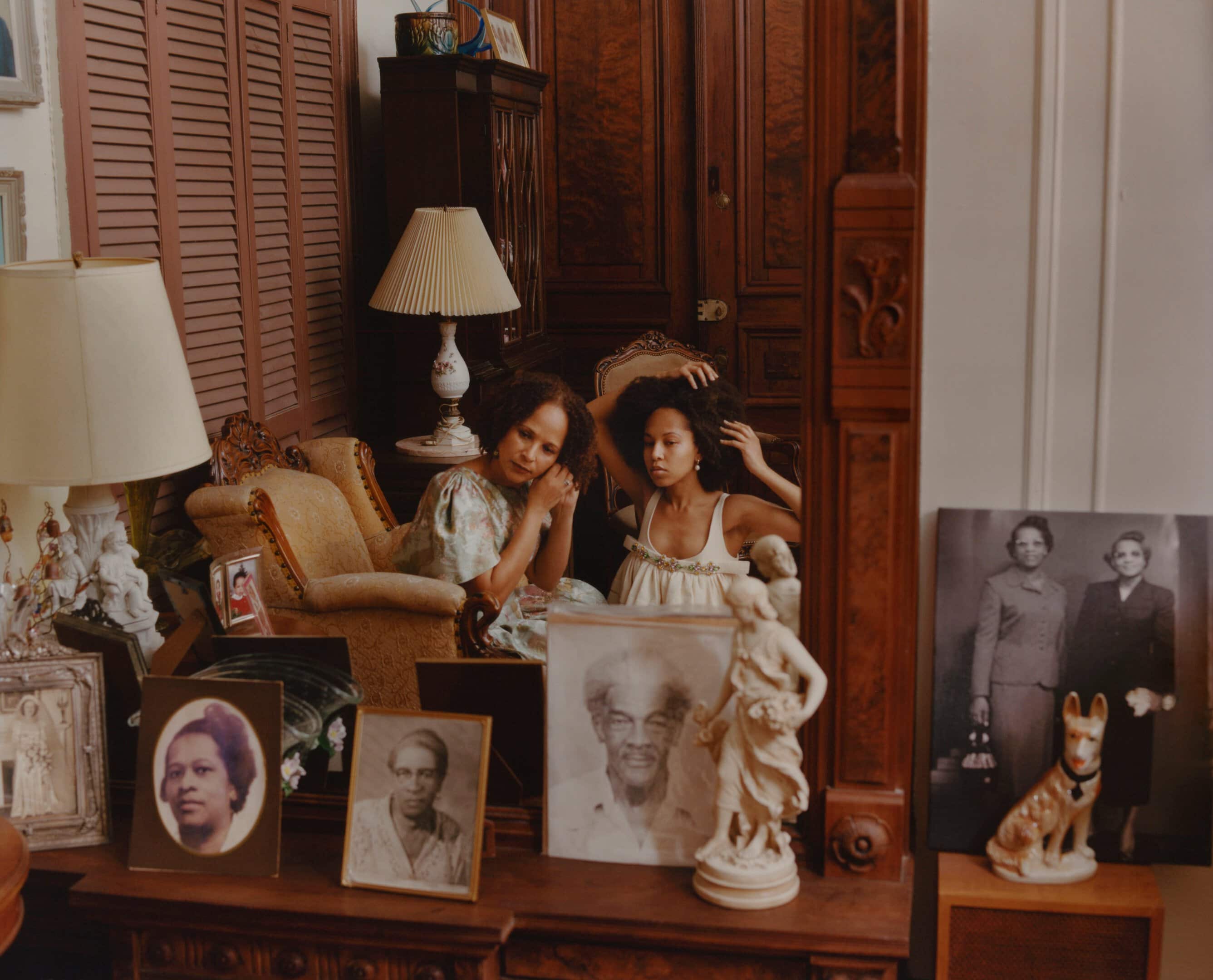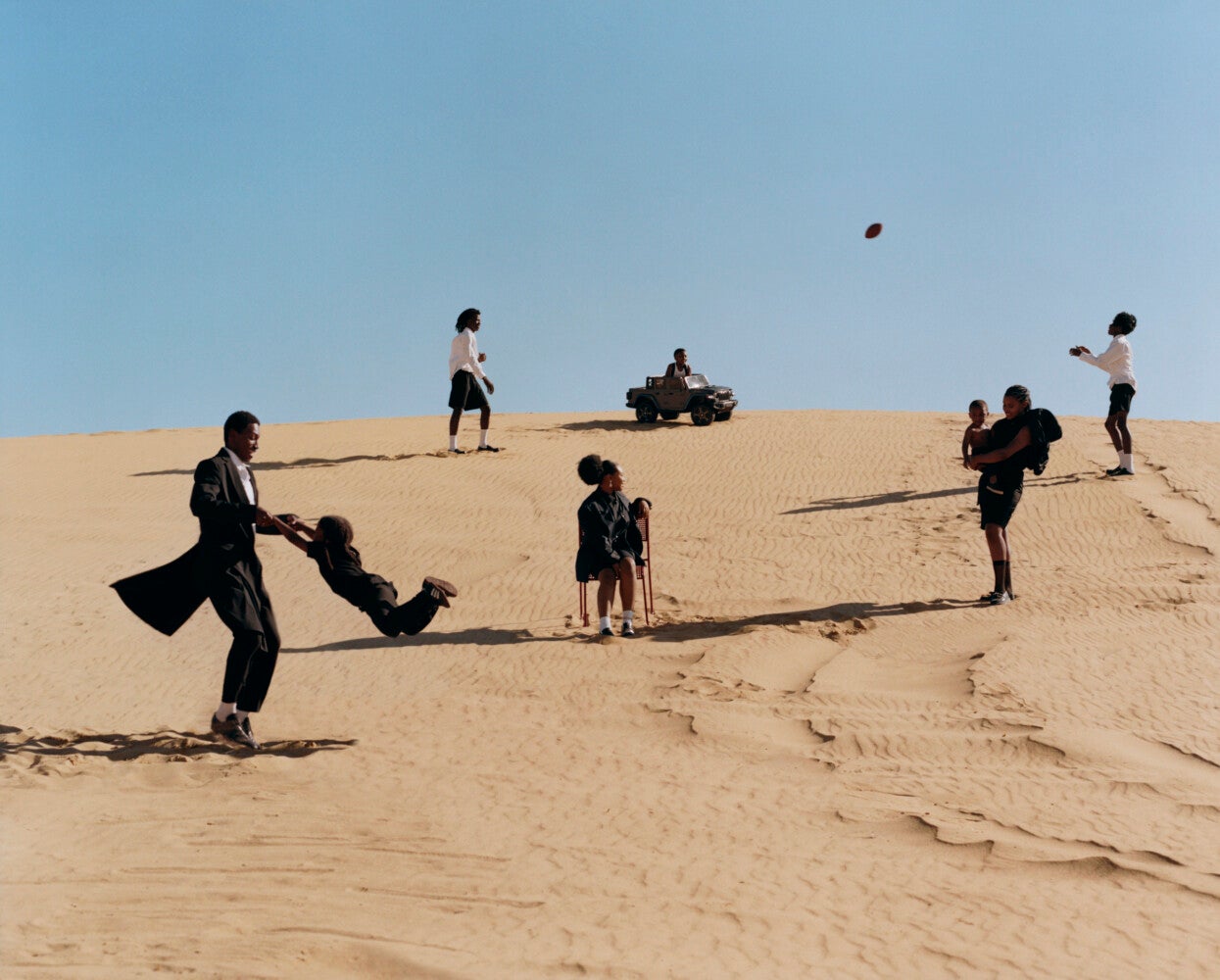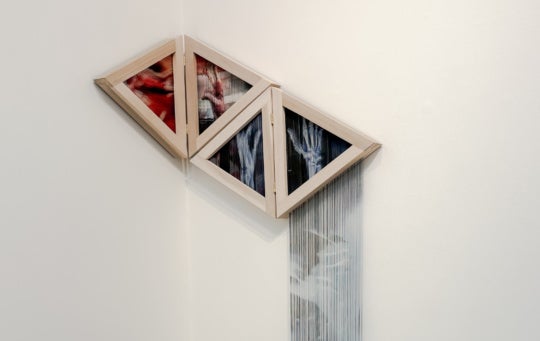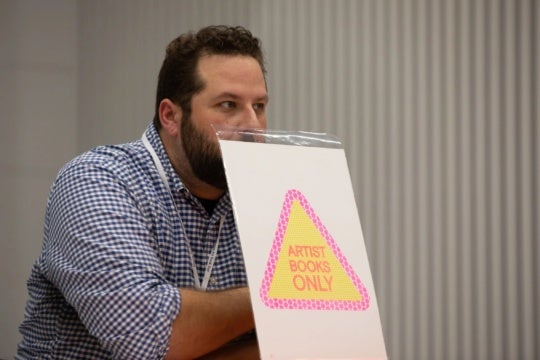
In this conversation, Georgia-born photographer Tyler Mitchell elucidates the fantastical dimensions of his photography. Mitchell’s oeuvre affirms a deep commitment to pleasure and play, and his exhibition, Idyllic Space at the High Museum of Art in Atlanta, situates this commitment within the Southern imaginary. When I spoke with Mitchell, once from a small island off the coast of Brazil, and again from my childhood bedroom in Decatur, Georgia, I recalled a quote from James Baldwin’s The Fire Next Time (1963) that sounds in harmony, amid ancestral rhythms, with Mitchell’s own artistic philosophy—“To be sensual, I think, is to respect and rejoice in the force of life, of life itself, and to be present in all that one does, from the effort of loving to the breaking of bread.”
This interview was edited for length and clarity.
Bryn Evans: You’ve said that exhibiting at The High has been a huge goal for you since you began showing your work. Can you paint me a picture of the young Tyler who visited the museum as a kid?
Tyler Mitchell: I’m an only child, so I was very concerned with my interior world. I was quite social, actually, but also in touch with how certain experiences made me feel. That sense of observation has made its way to my career now. When you’re showing in the museum that you grew up going to, it means something else. At ten years old, it never dawned on me that I would even be an artist. It felt far away from what I’d thought of as a possible path in life, but now it’s very much become one.
BE: Absolutely. I remember my mom taking me and my sisters to the High. Like you said, at that age I never imagined a calling where I’d write about the art that’s taking place in the museum I grew up in. It’s part of why I love working with local cultural institutions and publications from my childhood. It yields full circle moments, and there’s something about full circle moments that feels sacred.
TM: I completely agree with you there.

BE: I want to continue on this theme of origins. You grew up in Jack and Jill, and families from the organization are frequent collaborators in your photography. With the works featured in Idyllic Spaces, you encouraged the members to present themselves as they wanted, and told Nate Freeman that the show “becomes this kind of strange love letter to the community I grew up in, but also a sort of critique of respectability and presentation as it relates to Black Southern life, the sort of gentleness and politeness that lays underneath the way we choose to present ourselves.”
I admire your idea of critique as a love letter. Photography requires trust, even when an artist is coming from within a community. To me, Jack and Jill is synonymous with Black excellence, respectability politics, and affluence, so you’re offering a critique from within this exclusive social group and speaking to a subculture of respectability as it exists within the Southern Black imaginary.
TM: I’m trying to open up a conversation. Artists have the ability to talk about their personal background, and in my work, I’m choosing to be very open about my own. Part of the hindsight of it all, is looking back with affection for me. But also looking back and understanding and being able to constructively critique some of the underlying social values in the way I grew up. To critique something is also to love it.
BE: Can you speak more on Jayna Brown’s Black Utopia (2019)? Like Brown, you’re engaging the idyllic as a provocation—it’s not something that you are wholly defining for the audience, you’re inviting visitors to think about how the speculative, the Black utopic, the Black idyllic, can be informed by everyday life.
TM: Absolutely. The whole concept has been to challenge, question, and explore utopia head on, I’m asking how utopias can be visualized in photography. Utopia is a sort of unreachable, perfect state that is more invested in fantasy than it is in reality. How is this real for us today? What are those things that are just out of reach, whether it’s due to social conditions, historical conditions, or otherwise? In her book Black Utopias: Speculative Life and the Music of Other Worlds, Jayna Brown takes up this concept of utopia as a way to explore alternative states of being and imagining in Black culture. To do this, she engages musical figures, mystic practices, and alternative modes of living in society in which Black people engage their own creative worlds. She looks at the life stories of figures like Alice Coltrane, Sun Ra, and Sojourner Truth as foundations for how to explore what a Black utopia could look like. It’s a more theoretical approach, and my practice as a photographer is obviously visual, but that’s how I’m looking at it–as a form of transcendence.

BE: You’re making me reconsider the distinction between the theoretical and the visual, or what I’m lowkey hearing you say, the theoretical and the real. I’m more interested in how you make every project your own, where the visual and theoretical coexist. How does this manifest in a fashion shoot versus a session with members of your community? For instance, with a campaign, there is that theoretical production, the embodiment of a theme or concept being communicated to a potential consumer. Whereas, when you’re interacting with community members and families, there’s a tangible environment. This is their life. It isn’t necessarily contrived.
TM: I’d have to agree with you there. I’m also toeing these lines between documentary and fashion photography as genres. I’m very informed by documentary photography. I hope I’m going further by proposing a fantasy or a narrative in my photography. I’m going beyond the documentary by making images that ask–does an artist make a picture or simply take it? How much of an artist’s work should be about creating a visual world through imagination, and how much is about discovering something and bearing witness to it? With my work, it’s a bit of both. There are some moments that I just happen upon, and there are others that I construct. Delineating those differences is not of interest to me. I want to go beyond that, into my own sort of visual and narrative universe.
BE: I love that. Are there any folks working in documentary photography whose shoulders you’re standing on, or like whose shoulders you’re standing on in that regard?
TM: I really enjoy Baldwin Lee, a lesser-known Chinese American photographer who traveled throughout the South and took photographs of largely Black working-class communities in the 1980s. His book was just published, so he’s finally getting his due in the contemporary realm. There’s so many others: Roy DeCarava and Gordon Parks just to name two. You could as easily argue that both Parks and DeCarava were as much cultural documentarians as they were artists. They adapted the idea of social documentary with their own creative sensibilities.
BE: Can we look at a couple of photographs from your exhibition together — Vastness and Albany, Georgia. Walk me through these two images.
TM: Sure. Both scenes depict a family in Albany, Georgia enjoying real moments of embodied joy. And there’s something compositional happening where I’m containing them all in one frame and showing the many connections and points of contact and connection and, really, love that are coexisting within the frames of both photographs. Fashion plays a role as well, with the playfully draped shirt sleeves connecting an older brother to his two younger brothers. And that just speaks to how fashion has been a character in and of itself within my work. These are images that are also meant to expand visions of not only the notion of Black family, but also of the South, and what landscapes we immediately imagine when we think of the South. People often have very particular images in mind when they hear “American South” or “Georgia” or even “Atlanta,” so situating certain scenes within these sand dunes felt unexpected and open in terms of how we generally understand these geographies.

These are images that are also meant to expand visions of not only Black familyhood, but also the South, and what landscapes we understand to be the South.

I collaborated with these families to make these images, and part of that is about being open to certain moments just happening in real time.
BE: When I think about the Black idyllic or the Black utopic, Kerry James Marshall is someone who has really championed those themes in his own artistic practice. Vastness was produced twenty-five years after Kerry James Marshall’s Past Times (1997). Now that we’ve looked at two of your own images, let’s look at his painting. Is there something in Marshall’s piece that you’re drawing from or departing from with this exhibition?
TM: Absolutely. I don’t know an artist working in Black figuration today that isn’t inspired by Kerry James Marshall in one way or another, because he’s broken so much new ground with his work. This work Past Times is depicting a community in Chicago. A lot of things cross over compositionally, like the families. When I saw his show at the Met in 2016, I heard Kerry and Arthur Jafa talk about some of the ideas that inform their work. I was at NYU at the time, and it was a real call to make my own work that was in lineage with and in dialogue with these artists. But for myself—taking on my own background, my own history being from Georgia, and using my chosen medium of photography. The fact that this scene could be painted felt amazing, but it also felt almost one step further out of reach, because it was entirely from his imagination. I wanted to create these real moments in front of my camera, for myself, and for my viewers.
I’m particularly inspired by something he said about these vignettes, which are mostly scenes of couples and families relaxing in parks, enjoying quite simplistic scenes of love. Kerry was interested in taking up this genre from the Rococo period, which had been cast off as this very frivolous, unimportant, flowery, not critically serious genre of painting. He was taking that and melding it with many of the social and political concerns that he had had as a Black artist working and living in America in his moment because in the mid-1990s the art world was effectively done with anything that Black artists had to say about their political condition or concerns. So, Kerry James Marshall took an almost cynical approach to love, basically saying that, “Well, if we can’t talk about these political concerns that really do affect me, then maybe the last and only thing left to paint are scenes of love.”

BE: Do you find yourself photographing scenes of love?
TM: Absolutely.
BE: There are so many emerging photographers who want to enter the fashion world, and who look at you as someone who shows that it’s possible. In this way, you represent the Black utopic, the Black idyllic through a career that epitomizes what could be. And I guess the word possible is so essential to my understanding of those words. So, two questions—how does the Black idyllic manifest in your everyday life? And what are you excited for in the coming year?
TM: I’m excited to have spent a summer sharing my work with the community that I was raised in. The High Museum show has been an emotional moment of reflection, and it’ll undoubtedly change me forever. I’ve been looking forward to going back into my hole a bit and coming out with some new ideas. I’m making a new body of work for a show in the spring. And as an artist, there is no means to an end. The process really is the thing, so I’m trying to savor and appreciate all the research, all the world-building, all of the ideas that come up in day-to-day life that will inform the work that I’m making. Ideas that will hopefully reach people in the years to come.
In terms of how it manifests in my own life… I’m very pro-traveling, pro-adventure, pro-engaging with people. Even living in New York, just walking around for hours and essentially slowing the pace down a little bit—which our current era doesn’t encourage as much—so that I can enjoy myself and find community here in New York amongst this at-times chaotic industry. The utopic manifests in my own life by searching for alternative modes of being, for ways to slow down time, a little bit here and there, and for opportunities to form genuine connections with people who inspire and impress me. That’s kind of it.

Idyllic Spaces is on view at the High Museum of Art in Atlanta through December 1, 2024.




